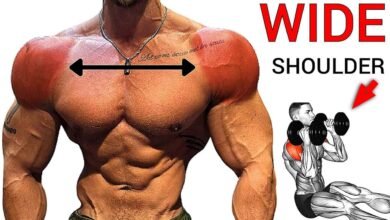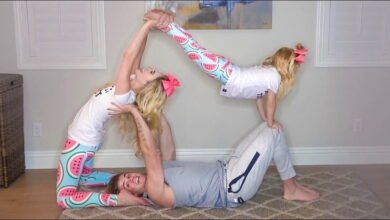Ultimate Guide to Calisthenics Back Exercises

Calisthenics, the exercise of strength education using your body weight, has been around for hundreds of years. Among its many blessings, calisthenics offers a sensible and easy way to develop a powerful, strong, and exquisite lower back. This article will explore calisthenics back exercises, including their benefits, key exercises to include in a balanced routine, and how to do them.
Why Is A Strong Back Important?
A strong back is essential for overall health and fitness. It provides stability and support during everyday activities and helps improve posture, reducing the risk of injury and increasing performance in different sports or physical activities. Additionally, an aesthetically pleasing physique requires proper development of the musculature in the upper body region, particularly around the spinal column, where it meets with other parts such as the shoulders, chest, abdomen, etc.
Back Training Benefits In Calisthenics Back Exercises
Functional Strength: The emphasis on functional strength in calisthenics back exercises means you can transfer this newfound power into real-life situations, making daily tasks much easier.
Postural Improvement: Many people suffer from poor postures, such as rounded shoulders or forward head positions, due to prolonged periods of sitting down without exercise.
Core Stability: Many forms of calisthenic movements require the engagement of core muscles, which promotes overall stability within these regions when one trains one’s back regularly.
Injury Prevention: Strengthening specific muscle groups located along both sides and adjacent spine individuals may reduce the likelihood of sustaining common injuries caused by sprains.
Key Exercises For Building A Stronger Back Using Calistenia Methods
Exercises targeting different areas should involve pulling motions. In contrast, others focus on stabilization because they work distinct muscles in each category. Namely, lats, traps, rhomboids, erectors, deep spinal stabilizers, etc. Here are some examples:

Pulling Movements
Pullups And Chin Ups
To perform pullups, grip a bar slightly wider than shoulder-width apart, facing away from you. Engage your core as you draw your chest toward the bar, squeezing together at the top, then lowering yourself under control. To do chin-ups, follow the same instructions but use an underhand grip instead (palms facing toward). Both variations effectively target the lats, traps, rhomboids, arms, and biceps more than other variants like wide-grip or close-grip.
Australian Pullups (Body Rows)
Place a horizontal bar at waist height, grab hold under it, lying underneath while keeping the body straight. Pull up until the chest touches, squeezing shoulder blades together before lowering again slowly downwards. Again, this works best for beginners wanting to build foundational pulling strength.
Inverted Rows
This exercise is similar to Australian pullups but done with feet elevated, usually resting on a bench or bar. It increases the difficulty level, making it harder to engage the back even more intensely.
Front Lever
The front lever represents one advanced calisthenic move requiring significant back and core strength to hang onto overhead grips and engage the entire body lift parallel with the ground hold position here for the longest time, especially in lower regions.
Stabilization Exercises
Plank Variations
Standard Plank: Keep your body straight and supported on your forearms and toes in a plank position. Engage the core and hold as long as possible.
Side Plank
- Lie on one side.
- Lift your body.
- Support yourself on one forearm and side of one foot.
It engages the obliques and side muscles of the back.
Back Extensions
On your stomach, with hands by your ears or behind your head, lift your chest off the ground while squeezing your lower back muscles before lowering again. This exercise targets the erector spine to improve strength in the lower back.
Bird Dogs
Get down on all fours with hands directly under shoulders and knees under hips. While keeping your back straight, stretch your right arm forward and left leg backward. Hold for a few seconds, then switch sides. Bird dogs help stabilize the lower back and core through improved coordination.
Structuring A Calisthenics Back Workout
A well-rounded workout includes exercises that use different muscle groups/movement patterns. Make sure to include these when constructing an effective calisthenics program targeting the entire length of your spine! Here’s an example routine you can modify based on your fitness level:

Warm Up (5-10 Minutes)
Arm Circles: 1 Minute Forward And Backward Each
Cat Cow Stretches: 10 Reps Total Or More If Time Allows
Dynamic Shoulder Stretches For About One Minute Should Suffice
Workout
Pull Ups – Three Sets Of Six To Ten Reps Are Ideal
Australian Pullups – Aim For Eight To Twelve During Three Sets
Front Lever Holds For Five Seconds At A Time With Three Sets (Or Tuck Lever If You’re A Beginner)
Supermans Can Be Done In Three Sets Of Ten To Fifteen
Do Standard Plank Variations For Thirty Seconds To One Minute Each In Three Sets
Bird Dogs – 3 sets of 10 reps per side
Cool Down (5-10 minutes)
- Child’s Pose: 1-2 Minutes
- Cat Cow Stretches: 1-2 Minutes
- Standing Forward Bend: 1-2 Minutes
Progression/Variations
Key tips to keep progressing through calisthenics to keep building strength & avoid plateaus include but are not limited to:
Increase Repetitions And Number Of Sets Over Time As You Get Stronger
Add Difficulty By Using Harder Versions Such As Wide Grip Pullups Or One Arm Australian Pullups
Incorporate Weight Once High Reps Become Easy By Using a Weighted Vest/Dipping Belt For Pull Ups/Inverted Rows
Concentrate On Form. Always ensure proper form is maintained so injuries don’t occur and effectiveness is maximized, Quality over quantity is crucial in calisthenics.
Common Mistakes To Avoid
Neglecting Form Focus On Maintaining Correct Alignment Throughout Each Movement And Control
Overtraining The Back Muscles Like Any Other Muscle Group Need Rest Don’t Train Your Back On Consecutive Days. Allow Sufficient Recovery Between Sessions
Ignoring Mobility Good Mobility Is Essential For Effective Training. Incorporate Stretching/Mobility Work Into Your Routine To Stay Flexible And Avoid Getting Stiff
Conclusion: Calisthenics Back Exercises
Calisthenics Back Exercises are an effective and powerful way to develop a strong, stable, and good-looking back. Pulling through different movements will ensure that there is balance in muscle development as well as functional strength. Remember to progress steadily, keep your form right, and pay attention to what your body says so you don’t get hurt or waste time on things that won’t work for you. If you stick with it long enough, calisthenics can help make your dreams come true regarding fitness goals while keeping your back healthy and strong!
FAQs For Calisthenics Back Exercises
Can beginners do calisthenics and physical activities?
Yes, novices can begin with less complicated physical games like Australian pull-u. S.A. and Superman. As they build strength, they can progress to more hard sporting events like pull-u.S. and front levers.
How regularly ought I do calisthenics returned sporting activities?
It is suggested that you teach your returned 2-two or three times per day, permitting at least 48 hours of rest between classes to ensure adequate cooperation muscle growth.
Do I need a device for calisthenics again for sporting events?
Many calisthenics-returned sporting activities may be achieved without a system. However, a pull-up bar is useful for physical games like pull-America and inverted rows. Strong items like tables or playgrounds can be used in bars for Australian sturdy.
How can I progress in calisthenics lower back exercises?
You can steadily increase the number of reps and units, the single challenging versions, or add weight when you master the fundamental sporting events. Consistent practice and the right form are key.
What are the benefits of calisthenics returned sporting activities?
Calisthenics lower back physical games improve practical strength, posture, and center stability and decrease the threat of damage. They also enhance the cultured appearance of the returned and standard physique.
Are calisthenics lower back sports powerful for building muscle?
Yes, calisthenics returned physical activities can construct muscle always and with proper progression. Focus on compound moves and regularly increase depth for premiere muscle boom.
How do I avoid injury while doing calisthenics again in physical activities?
To avoid damage, warm up properly before workout routines, maintain a stable shape, develop regularly, and pay attention to your frame. Avoid overtraining, and make certain you allow enough time for restoration.





